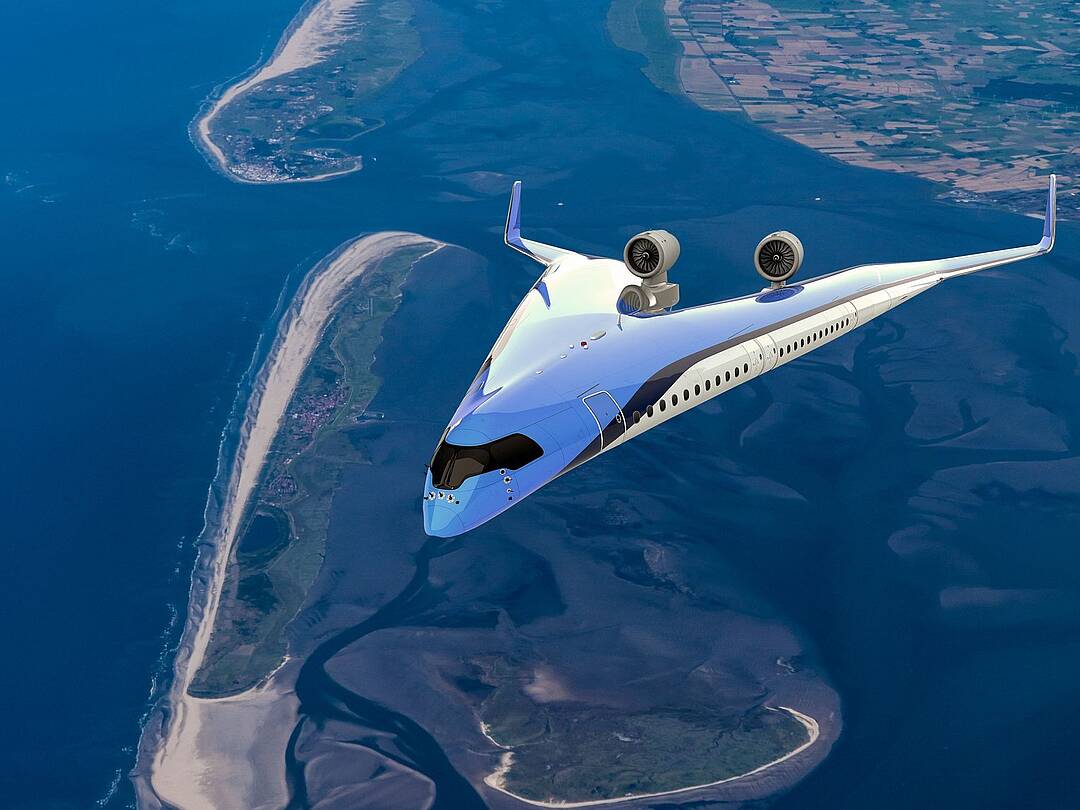The “Flying V” flying wing developed by TU student Justus Benad has now been built and made its maiden flight
The test flight for this long-haul airliner of the future took off in July 2020 from Faßberg airfield in Germany and lasted about five minutes. The flight achieved worldwide attention as the aircraft in question was a scaled model of a futuristic flying wing, a V-shaped aircraft consisting basically only of wings.
The “Flying V”, as this innovative and energy-saving airliner is called, was developed by TU Berlin research associate Justus Benad while still studying in the Aeronautics and Astronautics program. Engineers at TU Delft in the Netherlands further developed his idea and the construction of a two-and-a-half meter scale model was financed by KLM.
“Congratulations to Dr. Roelof Vos and his team,” said inventor Justus Benad in recognition of the work done by engineers at TU Delft on the occasion of the first flight of the “Flying V”. Benad is listed in the patent application as inventor.Daniel Reckzeh, R&T senior manager with project partner Airbus, observes: “This test is an important milestone in demonstrating the feasibility of the design in terms of flight physics. It also provides visible proof of the soundness of this novel idea.” The idea itself came from Benad, now researching at TU Berlin’s Chair of System Dynamics and Friction Physics (Institute of Mechanics) under Professor Dr. Valentin Popov. Benad first presented his model and the idea behind it a few years ago during a mechanics seminar at TU Berlin.
A novel idea takes visible shape
His extraordinary idea for an airliner with the capacity of an Airbus and a wingspan of 65 meters where the passengers sit directly in the wing came to him in 2015 while he was doing an internship with Airbus in Hamburg. Such a design would save considerable energy - some 20 percent of the kerosene or other fuels used in fact. It wasn’t just Airbus that was impressed: Dutch airline KLM also recognized the potential of the idea and commissioned aeronautical engineers at TU Delft to develop the concept and construct a scaled model capable of flight. Airbus immediately applied for a patent with Justus Benad listed as inventor.
Video from the maiden flight
![[Translate to English:] Flying V in der Luft [Translate to English:] Flying V in der Luft](https://www.static.tu.berlin/fileadmin/www/_processed_/f/d/csm_PI_FLying_V_Joep_van_Oppen_FlyingV_Scalemodel_Flighttest_1_945c5edd4a.png) © Joep van Oppen
© Joep van Oppen
Please note: Once you watch the video, data will be transmitted to YouTube/Google. For more information, see Google Privacy.
“There is still a lot of research to be done. It will be some years before the “Flying V” can take off on a long-haul flight with real passengers on board.”
The maiden flight has provided sufficient data for the development of an aerodynamic software model as well as the analysis and improvement of flight characteristics using a flight simulator. It is also now possible to consider options for future propulsion systems and fuels such as hydrogen. Benad is delighted that his idea has attracted so much interest. However, as he says: “There is still a lot of research to be done. It will be some years before the “Flying V” can take off on a long-haul flight with real passengers on board.”

